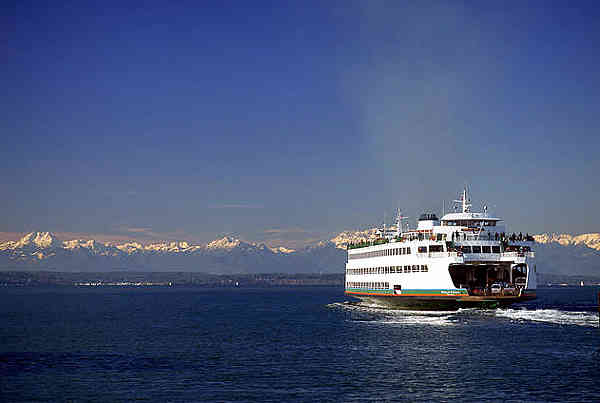A little more than a decade ago, the Washington state ferry system spent 12 percent of its operating budget on fuel. In July, that figure will be 23 percent, resulting in a projected outlay of $112 million in the biennium that will end in 2015. Looking for a way to get costs under control, the ferry system has latched onto the booming natural gas industry, whose fortunes have risen with the technology known as fracking.
WSF is currently considering proposals to retrofit its six Issaquah fleet ferries with the capability to use liquified natural gas, which officials estimate will cost 40 to 50 percent less than the diesel fuel now used by the system’s vessels. What’s more, they say it will produce less emissions than diesel. Those attributes are prodding other ferry systems around the country and in Canada to mull a switch to natural gas as well.
Fracking has, of course, set off a heated debate around the country. Some allege that the process, which involves injecting chemicals mixed with water and sand into underground wells, pollutes water and causes other environmental hazards. Consequently, WSF has heard concerns about its planned use of gas extracted through this method, concedes director David Moseley. He says, however, that “fracking in not just an LNG (liquified natural gas) issue. Fracking is used to get both natural gas and oil.”
But the technology has brought natural gas to the fore like never before, and there has been a rush of investment into an industry that promises a largely untapped reservoir of cheap fuel. Yet the ultimate cost, as well as the environmental impact, of extracting natural gas remains uncertain. And that’s one of the reasons that WSF engineer Alex Zecha is questioning what he calls the “sunshine-and-roses story being pitched by WSF officials.”
Zecha, who works on the Evergreen State ferry traveling among the San Juan Islands, points to a 2011 New York Times
expose that drew upon e-mails and documents from within the industry, many of which suggested that it is far more expensive to extract natural gas than has been claimed. “Money is pouring in” despite the fact that natural gas extraction is “inherently unprofitable,” wrote one analyst in an e-mail quoted by the Times. “Reminds you of dot-coms.”
“It’s a pretty dated article,” responds Moseley, the WSF director. “There has been a lot of evolution in the industry in the last two years.” Nevertheless, he says “prices will go up,” in part because of new regulation stemming from environmental concerns. He says they just won’t go up as much as diesel fuel has.
Zecha, who prepared a report on WSF’s natural gas conversion for legislators, has still other concerns. He says that engines using natural gas take longer to both accelerate and slow down. He likens using such an engine on a ferry to “putting brakes from a motorcycle on a car,” and says it could create a problem should a vessel, say, find another boat in its way.
Moseley says he’s never heard of that issue, although a 2011 feasibility study on natural gas conversion prepared for WSF by The Glosten Associates, a group of consulting engineers, noted that “historically gas fueled engines have slower response times than diesel fueled engines.”
WSF director says that “any LNG engine we would use would have the same power that we use today.”
Finally, Zecha points out that there are few local distributors of natural gas. A glitch in supply, he worries, could temporarily disable ferries that he calls the “backbone” of the ferry system.
But here the trendiness of natural gas may help matters. Not only WSF, but Totem Ocean Trailer Express, a big cargo ship operation that travels between ports in Tacoma and Anchorage, is considering using natural gas. If that happens, Moseley says, “I believe the industry will respond,” meaning that we could see a flurry of natural gas distributors in the Northwest.








